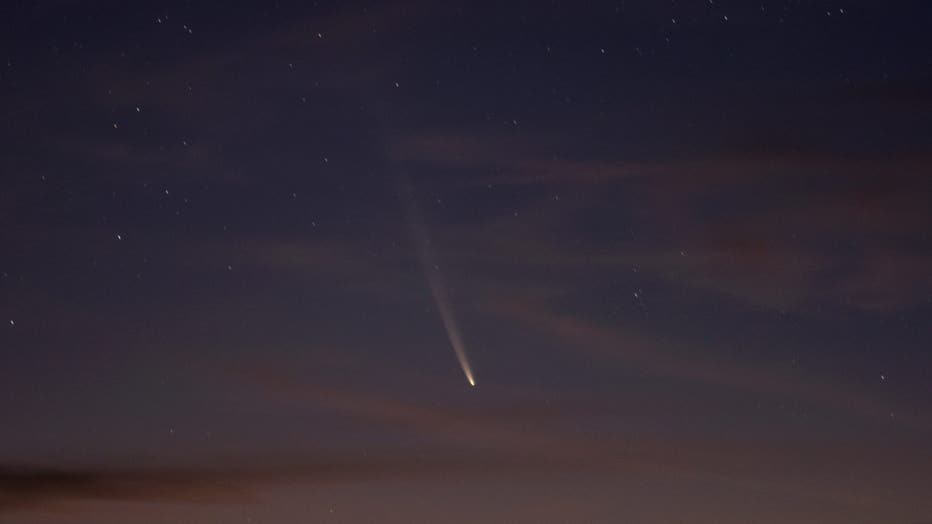Rare Tsuchinshan-Atlas comet should now be visible: Here's how to see it
Watch: Stunning 'Comet of the Century' dazzles as it soars past Earth
Astronomers report that Comet Tsuchinshan-ATLAS reached its closest point to the Sun on Sept. 27, putting on a spectacular display. The comet will make its way back near Earth, offering another chance to witness this celestial event around Oct. 12.
A rare, bright comet is slinging toward Earth and, weather permitting, should be visible through the end of the month.
Comet Tsuchinshan-Atlas, described by stargazing enthusiasts as the "Comet of the Century," will make its closest pass to Earth on Sunday. It should be bright enough to see with the naked eye, but binoculars and telescopes will give a better view.
"It'll be this fuzzy circle with a long tail stretching away from it," Sally Brummel, planetarium manager at the Bell Museum in Minnesota, told The Associated Press.
Watch: 'Comet of a century' puts on beautiful show while zooming by Earth
What is comet Tsuchinshan-Atlas?
Comet Tsuchinshan-Atlas, also called C/2023 A3, was discovered in 2023. It’s named for the observatories in China and South Africa that first noticed it. It came from what’s known as the Oort Cloud well beyond Pluto.

Comet C2023 A3 Tsuchinshan-Atlas is seen over the hills near the village of Aguas Blancas, Lavalleja Department, Uruguay, at dawn on September 28, 2024. (Photo by MARIANA SUAREZ/AFP via Getty Images)
After making its closest approach about 44 million miles off Earth, it won't return for another 80,000 years — assuming it survives the trip.
How to view comet Tsuchinshan-Atlas
If you want to see comet Tsuchinshan-Atlas for yourself, experts say you should step outside about an hour after sunset on a clear night and look to the west.
RELATED: NASA: Black hole’s Death Star-like beam appears to make stars explode
The comet should be visible from both the northern and southern hemispheres.
What is a comet?
Comets are frozen leftovers from the solar system’s formation billions of years ago. They heat up as they swing toward the sun, releasing their characteristic streaming tails.
In 2023, a green comet that last visited Earth 50,000 years ago zoomed by the planet again. Other notable flybys included Neowise in 2020, and Hale-Bopp and Hyakutake in the mid to late 1990s.
Several comets are discovered every year, but many burn up near the sun or linger too far away to be visible without special equipment, researchers told the AP.

